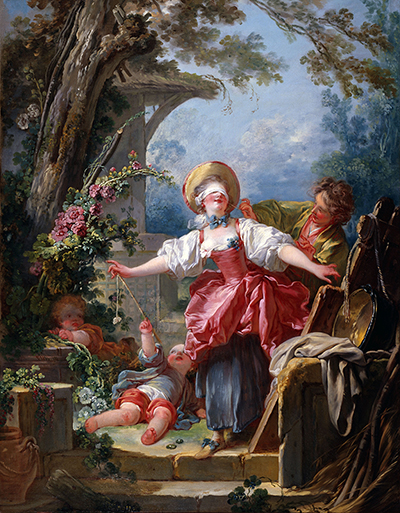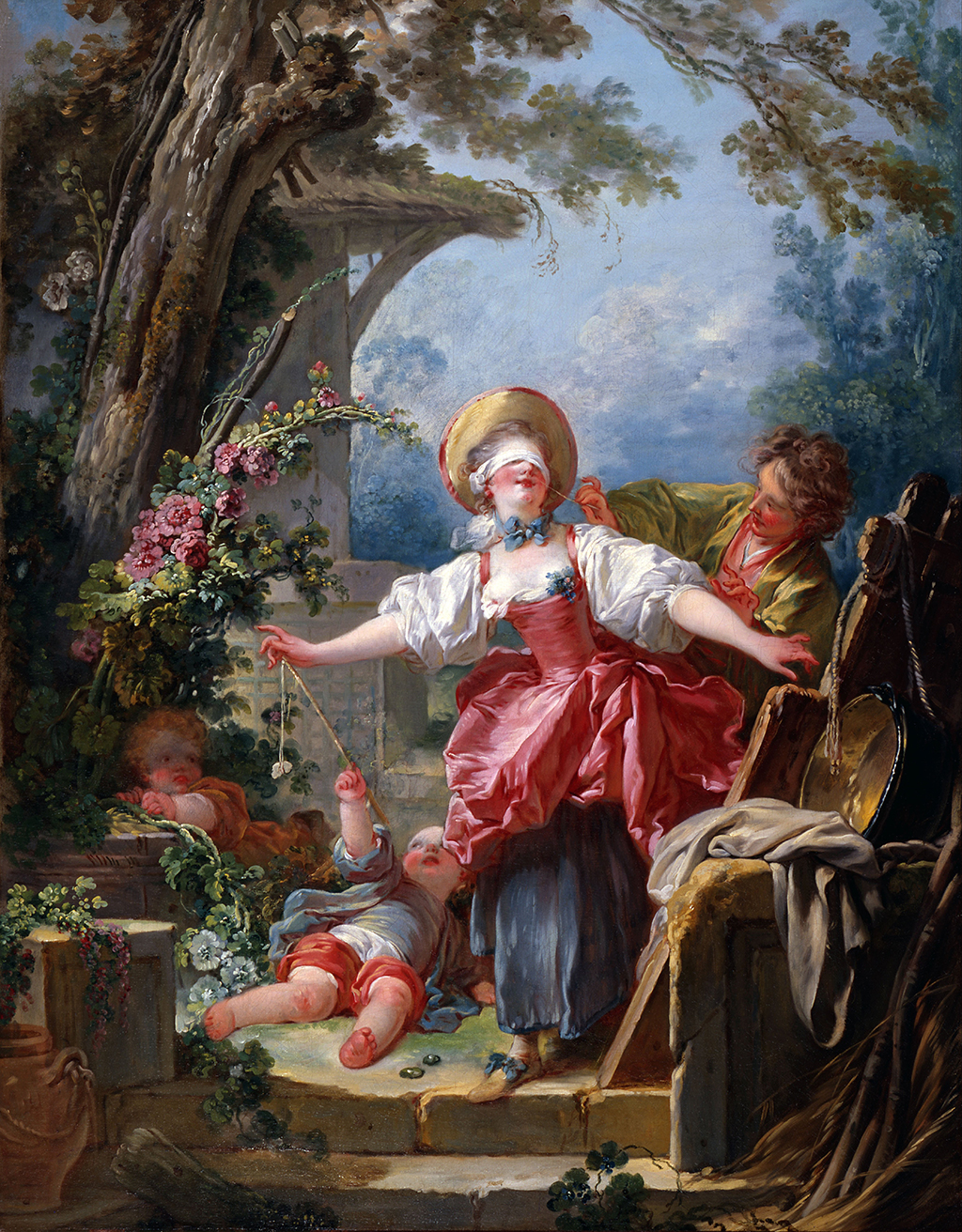 Buy Art Prints Now
Buy Art Prints Nowfrom Amazon
* As an Amazon Associate, and partner with Google Adsense and Ezoic, I earn from qualifying purchases.
Blind Man's Buff is dated at around 1750-1752 and in it we find some elements of Fragonard's signature style.
The artist loved to capture figurative portraits outdoors within the comfort of their gardens, normally playfully throwing themselves around in a fit of entertainment. During the fairly conservative 18th century it would have been refreshing to see figures such as these seemingly larking around without any concern for their personal reputations. Fragonard concentrated on providing this joy alongside beautiful landscape scenes and bright, upbeat skies. There would generally be a tall element in either corner that would help to frame the main content and one can see an example of precisely that within this painting. At the back we see elements of stone work, suggesting we are in a secluded section of a garden, rather than a public park. Two adults carry out the game at hand, whilst their child lies happily on the floor, seemingly occupying himself without concern.
This game is known to have been incredibly popular during the 18th century and positively encouraged the type of merriment of which Fragonard so enjoyed putting into his paintings. There are spring flowers that are believed to have been added in order to signify the youthful nature of this young couple, though most viewers would probably have missed that element of symbolism completely whilst simply appreciating the aesthetic value of that inclusion. The outfits used are particularly fancy, though it feels unlikely that these figures would have behaved with such abandon had they been wearing this type of clothing - perhaps an element of artistic license? That would be in line with Fragonard's other paintings, in any case, and so feels entirely consistent within his career oeuvre.
Blind Man's Buff is one of the highlights in the collection of the The Toledo Museum of Art, but this significant institution also holds a number of other important paintings within their overall collection. One might initially think of View of Toledo by El Greco, which was in Spain, but this museum is actually in the United States. Amongst their offering, you can also discover Architect's Dream by Thomas Cole, Fanny Waugh Hunt by William Holman Hunt, Salutation of Beatrice by Dante Gabriel Rossetti and Rainy Day, Boston by Childe Hassam. They appear to have concentrated on acquiring art from after the classical movements, but not later than around the 1950s. All-in-all, it is a truly fabulous collection of art that makes it a must-visit for anyone living in the rough vicinity of this venue.




